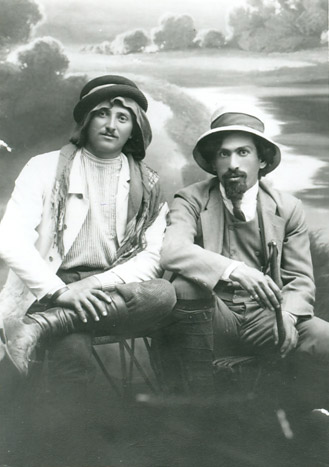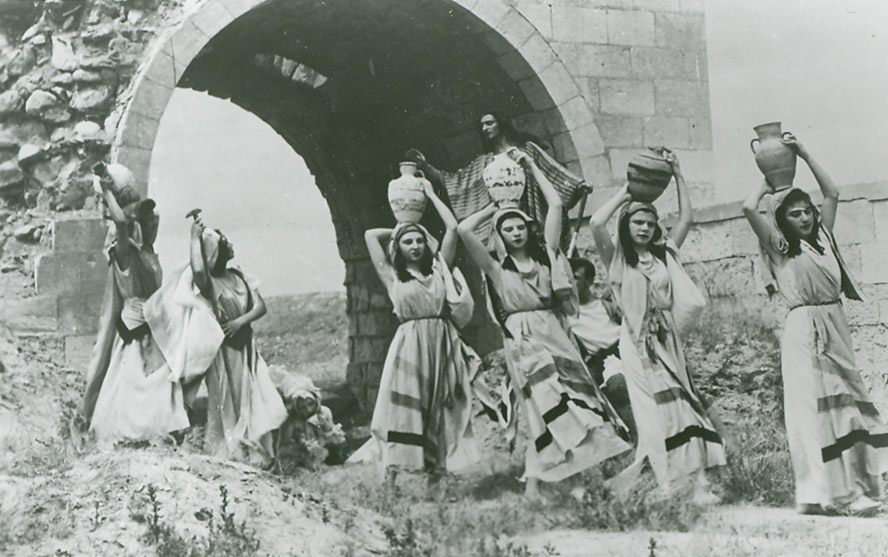This segment of a studio image of the clandestine group Hashomer [The Guard, (above left)] highlights the duality of secularizing orientations among European Zionist "olim" [new immigrants] in Palestine at the beginning of the twentieth century: The transformation of the traditional "exilic Jew" into a modern European followed the ideas of the Jewish Enlightenment, and is represented by Israel Schohat on the right; and the transformation of the European Jew into a native of the Middle East and the Land of Israel is represented by his friend, Menachem Portugali, on the left. Hashomer's hybrid clothes represented the desire to reconnect with the ancient Hebrew identity by borrowing clothes items from the neighboring Arabs and by imitating them.
Dance performances drawing on biblical images provided another creative venue for displaying the symbolic continuity between the ancient and the modern Hebrew identity (below left). Interpreting the Bible as the foundation of the national canon of Jewish texts, it inspired members of the Zionist Jewish society in Palestine to connect with their national past and to embrace ancient forms as part of the renewal of the Hebrew culture.

